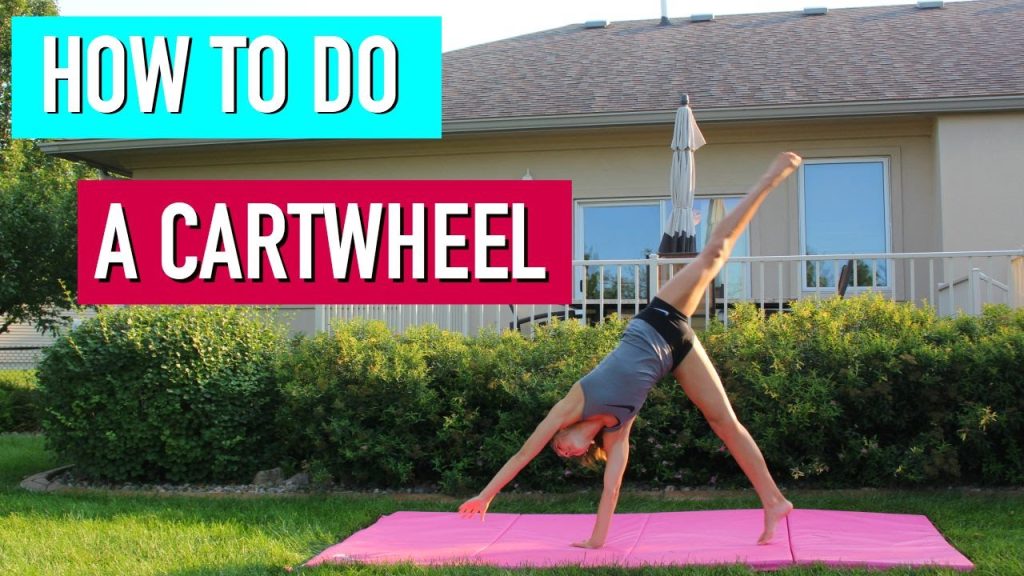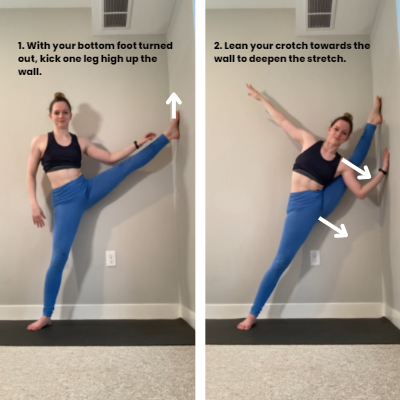The cost of doing gymnastics can vary widely. It depends on several factors.
Gymnastics is an exciting and challenging sport. Many children and adults are drawn to it. But how much does it really cost to participate in gymnastics? The answer isn’t simple. There are many factors to consider. These include gym fees, equipment, and travel for competitions.
Understanding the costs can help you plan better. It ensures you or your child can enjoy gymnastics without financial stress. In this post, we’ll break down the costs involved. This way, you can make an informed decision. Ready to learn more? Let’s dive into the details of gymnastics expenses.
Introduction To Gymnastics Costs
Gymnastics is a popular and rewarding sport. It offers physical fitness, discipline, and fun. But how much does it cost to do gymnastics? Understanding the different costs can help you budget better. Let’s break down the expenses into initial and ongoing costs.
Initial Expenses
Starting gymnastics involves some upfront costs. Here are some of the initial expenses:
- Registration Fees: Many gyms charge a one-time registration fee. This fee can range from $50 to $200.
- Uniforms: Gymnastics uniforms are essential. A basic leotard can cost between $20 and $50. Competition uniforms are more expensive and can cost up to $200.
- Equipment: While gyms provide most equipment, personal items like grips and wrist guards are necessary. These can add an extra $50 to $100 to your initial costs.
Ongoing Costs
After the initial setup, there are ongoing costs to consider:
- Monthly Tuition: Gymnastics classes have a monthly fee. Prices vary by location and skill level. Expect to pay between $50 and $300 per month.
- Competition Fees: If your child competes, there are additional fees. These include entry fees, travel, and accommodation. Competition fees can add up to $1,000 or more each year.
- Uniform Maintenance: As your child grows, new uniforms may be needed. Budget for at least one new leotard each year, which can cost between $20 and $200.
- Private Lessons: Some gymnasts take private lessons for extra practice. These can cost between $30 and $100 per hour.
Understanding these costs helps in planning and making informed decisions. Gymnastics can be a significant investment. But the benefits it offers are priceless.

Credit: sportsedtv.com
Gymnastics Classes And Coaching Fees
Gymnastics can be a wonderful sport for children and adults alike. It helps build strength, flexibility, and coordination. However, the cost of gymnastics classes and coaching fees can add up. Understanding these fees can help you plan better. Let’s break down the costs associated with group classes and private coaching.
Group Classes
Group classes are the most common way to learn gymnastics. These classes often have a set schedule and include several students. The average cost for group classes ranges from $50 to $150 per month. Prices depend on the gym’s location and the level of training. Beginners might pay less than advanced students. Most gyms offer discounts if you pay for several months in advance. Check with your local gym for specific rates and any available discounts.
Private Coaching
Private coaching offers one-on-one instruction. This option allows for personalized training and faster progress. Private coaching rates are higher than group classes. The average cost ranges from $50 to $100 per hour. Rates depend on the coach’s experience and the gym’s location. Some coaches offer packages at a reduced rate. Discuss your goals with the coach to determine how many sessions you need. This can help you budget accordingly.
Gymnastics Equipment And Gear
When starting gymnastics, understanding the costs of equipment and gear is crucial. Investing in the right items ensures safety and enhances performance. This guide breaks down the essential equipment and optional gear needed for gymnastics.
Essential Equipment
Every gymnast needs certain basic equipment. These items are vital for safety and performance.
- Leotards: Comfortable, flexible clothing that allows full movement.
- Gymnastics Mats: Provide cushioning to prevent injuries during falls.
- Hand Grips: Protect hands and improve grip on bars.
- Footwear: Specialized shoes or socks to enhance grip and protect feet.
These essentials ensure a solid foundation for any gymnast. Investing in quality items can make a big difference.
Optional Gear
Optional gear can enhance a gymnast’s experience but is not necessary for everyone.
- Wrist Supports: Offer extra support and reduce wrist strain.
- Balance Beam: Useful for practice at home.
- Chalk: Helps maintain dry hands for a better grip.
- Resistance Bands: Aid in strength training and flexibility exercises.
Optional gear can add to the cost but may improve skills and comfort. Consider these items based on individual needs and budget.
| Equipment | Average Cost |
|---|---|
| Leotards | $20 – $50 |
| Gymnastics Mats | $100 – $300 |
| Hand Grips | $10 – $30 |
| Footwear | $20 – $60 |
| Wrist Supports | $10 – $20 |
| Balance Beam | $100 – $400 |
| Chalk | $5 – $15 |
| Resistance Bands | $10 – $30 |
Understanding the costs helps plan your gymnastics journey. Essential equipment is a must, while optional gear can enhance the experience.

Credit: www.synergygymnastics.co.uk
Competition And Travel Expenses
Participating in gymnastics competitions can be thrilling. But it also comes with extra costs. Competition and travel expenses can add up quickly. Let’s break down these expenses to give you a clearer picture.
Entry Fees
Entry fees are the first cost to consider. Each competition has its own fee. These fees usually range from $50 to $150 per event. If your gymnast competes in multiple events, the costs increase. Some competitions also have team fees. These can range from $200 to $500.
Travel And Accommodation
Travel and accommodation are other significant expenses. Competitions often require traveling to different cities. This means you need to budget for transport. Plane tickets, gas, or train fares add up. Accommodation is another cost. Hotels can range from $100 to $200 per night. If the competition lasts several days, the costs increase. Don’t forget food and other daily expenses. These can also add to your overall budget.
Insurance And Medical Costs
Participating in gymnastics requires more than just dedication and practice. Gymnasts often face physical risks that necessitate having proper insurance and covering medical expenses. Understanding these costs is crucial for both athletes and their families to ensure they are adequately prepared.
Insurance Options
Various insurance options are available for gymnasts to protect against injuries. These options include:
- Health Insurance: Covers general medical expenses, including doctor visits and hospital stays.
- Supplemental Insurance: Provides additional coverage for sports-related injuries not covered by standard health insurance.
- Club Insurance: Many gymnastics clubs offer insurance policies that cover injuries sustained during training and competitions.
Common Medical Expenses
Gymnasts often incur medical expenses due to the physical demands of the sport. Common expenses include:
| Medical Expense | Average Cost |
|---|---|
| Physiotherapy Sessions | $50-$100 per session |
| Doctor Visits | $100-$200 per visit |
| Diagnostic Tests (e.g., X-rays, MRIs) | $200-$1,000 per test |
| Minor Surgeries | $1,000-$5,000 |
| Emergency Room Visits | $500-$3,000 |
These expenses can add up quickly, making it essential to have adequate insurance coverage. Ensuring proper protection helps manage these costs and provides peace of mind for gymnasts and their families.

Credit: www.youtube.com
Budget-friendly Tips For Gymnastics
Gymnastics can be an expensive sport. But there are ways to save money. Here are some budget-friendly tips to help you keep costs down.
Buying Used Equipment
Buying used equipment can save you a lot of money. Many gymnasts sell their old gear at a lower price. You can find items like leotards, mats, and grips at second-hand stores or online. Make sure to inspect the condition before purchasing.
Finding Discounts
Look for discounts on gymnastics equipment and classes. Many stores offer seasonal sales. Sign up for newsletters to stay updated on promotions. You can also check if your gym offers discounts for early sign-ups or multiple classes.
Scholarships And Financial Aid
Gymnastics can be an expensive sport. The costs can add up quickly. Many families seek ways to reduce these costs. Scholarships and financial aid can help. These options make gymnastics more affordable. Here, we explore some opportunities and how to apply for them.
Scholarship Opportunities
Many organizations offer scholarships for gymnasts. These scholarships help cover training and competition fees. Local gymnastics clubs often have their own scholarships. Research these options in your area. National organizations also provide scholarships. USA Gymnastics is a good place to start. They offer various scholarships for young athletes. Colleges also offer scholarships for gymnastics. Many universities have strong gymnastics programs. These scholarships can cover tuition and other costs.
Applying For Aid
Applying for financial aid requires some preparation. Gather all necessary documents first. This might include tax returns, pay stubs, and proof of expenses. Fill out the application forms carefully. Double-check all information for accuracy. Submit your application before the deadline. Many scholarships have strict deadlines. Late applications are often not considered.
Follow up after submitting your application. Contact the organization if you do not receive a response. Keep a record of all your communications. This helps if there are any issues with your application. Stay organized throughout the process. A well-prepared application increases your chances of receiving aid.
Balancing Costs And Benefits
Gymnastics can be an expensive sport, but its benefits are immense. Understanding the balance between costs and benefits is crucial. Investing in gymnastics for your child can lead to significant rewards. These rewards extend beyond the physical and into personal development.
Value Of Investment
Every dollar spent on gymnastics is an investment in a child’s future. The skills learned in gymnastics are invaluable. They include discipline, focus, and perseverance. Training sessions help build strength and flexibility. These physical benefits are just the beginning.
Gymnastics also fosters a sense of commitment. Children learn to set and achieve goals. This mindset is beneficial in all areas of life. The value of this investment extends far beyond the gym.
Long-term Benefits
The benefits of gymnastics last a lifetime. Physical fitness achieved through gymnastics promotes a healthy lifestyle. Children who practice gymnastics are less likely to develop health issues. They maintain better fitness levels throughout their lives.
Gymnastics also builds confidence. Performing routines and mastering skills boosts self-esteem. This confidence carries over into school and social situations. It helps children face challenges with a positive attitude.
Gymnastics teaches time management. Balancing training with school work requires organization. This skill is essential for success in adulthood. The long-term benefits of gymnastics make it a worthwhile investment.
Conclusion And Final Thoughts
Engaging in gymnastics can be a significant financial commitment. Understanding the costs involved can help you plan better. This section will summarize the expenses and encourage participation in the sport. Gymnastics offers many benefits, making it a worthwhile investment.
Summarizing Costs
The cost of gymnastics varies widely. Monthly class fees can range from $50 to $300. Private lessons can cost more, between $40 to $100 per hour. Uniforms and equipment add extra expenses, often $100 to $200 per year. Competitions also have entry fees, typically $60 to $200 per event. Travel and accommodation for competitions can further increase costs.
Other costs include gym memberships, insurance, and training camps. Gym memberships can cost $50 to $100 per month. Insurance is essential and can be $100 to $300 annually. Training camps, often held during summer, can cost several hundred dollars. Altogether, annual costs for gymnastics can range from $1,000 to $5,000 or more.
Encouraging Participation
The benefits of gymnastics are numerous. It promotes physical fitness, discipline, and confidence. Many families find the investment worthwhile. Financial aid and scholarships can help reduce costs. Many gyms offer discounts for multiple children or long-term commitments.
Exploring local programs and community centers can also lower expenses. Some offer reduced rates or free introductory classes. Fundraising can help cover competition and travel costs. Many gyms support team fundraising efforts.
Despite the expenses, gymnastics provides valuable life skills. It’s an investment in your child’s future. With proper planning, the costs can be manageable. The rewards of participating in gymnastics are immense.
Frequently Asked Questions
How Much Are Gymnastics Classes?
Gymnastics classes typically range from $50 to $200 per month. Prices depend on location, class frequency, and gym reputation.
What Equipment Do I Need For Gymnastics?
For beginners, basic equipment includes leotards, grips, and mats. Advanced gymnasts may need additional gear like beams and bars.
Are Private Gymnastics Lessons Worth It?
Private lessons offer personalized coaching and faster progress. They can be more expensive but beneficial for serious gymnasts.
How Often Should My Child Attend Gymnastics?
Most children attend gymnastics 1 to 3 times a week. Consistent practice is key for skill development and progress.
Conclusion
Investing in gymnastics can be rewarding. Costs vary based on location and level. Basic classes are affordable. Advanced training and equipment can be more expensive. Consider travel and competition fees. Many gyms offer payment plans. Always research and compare options.
Your budget and commitment level matter. Gymnastics builds strength, flexibility, and discipline. It’s worth every penny for many families. Start with a trial class to assess interest. Making an informed decision helps ensure a positive experience.


